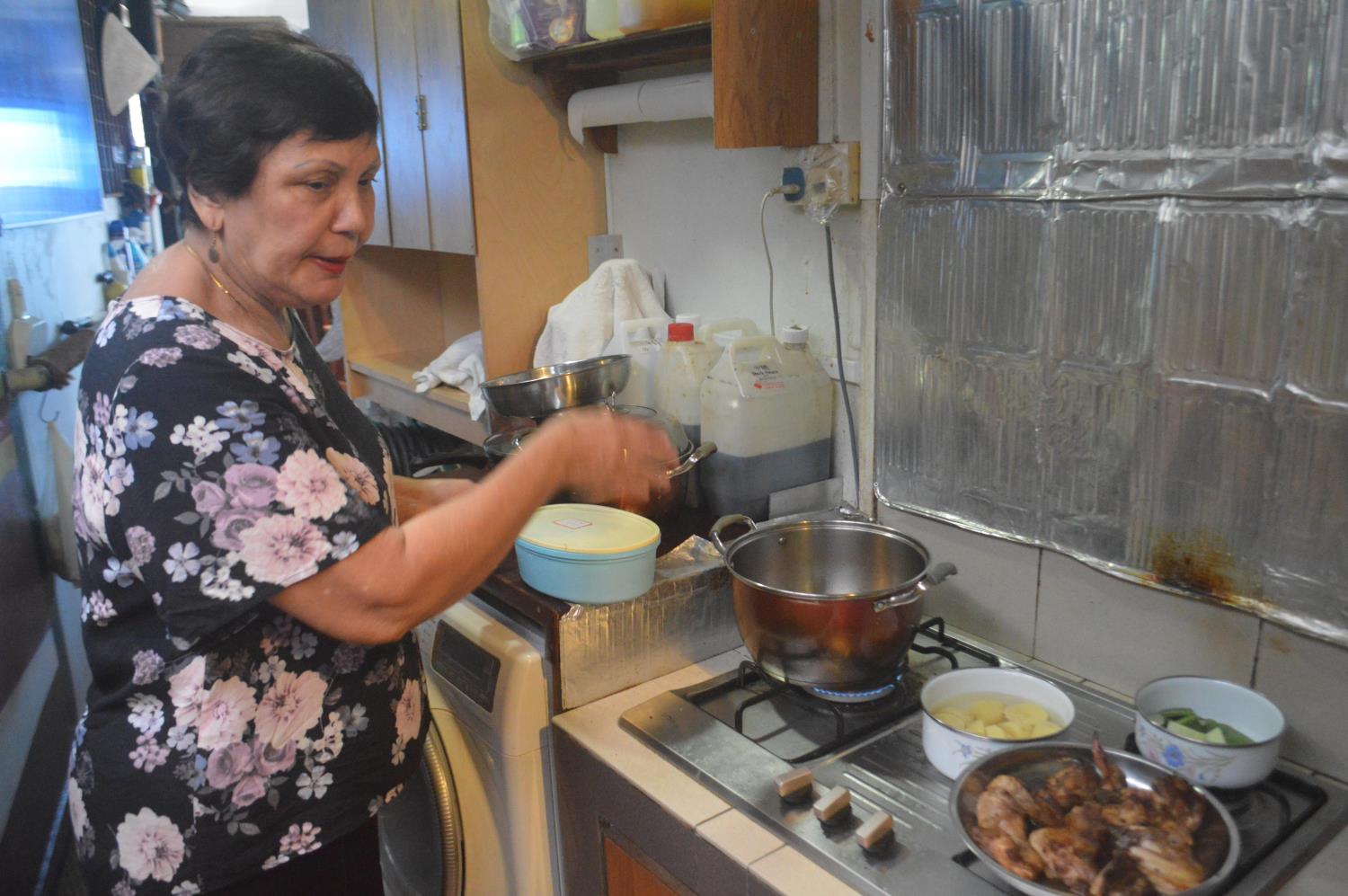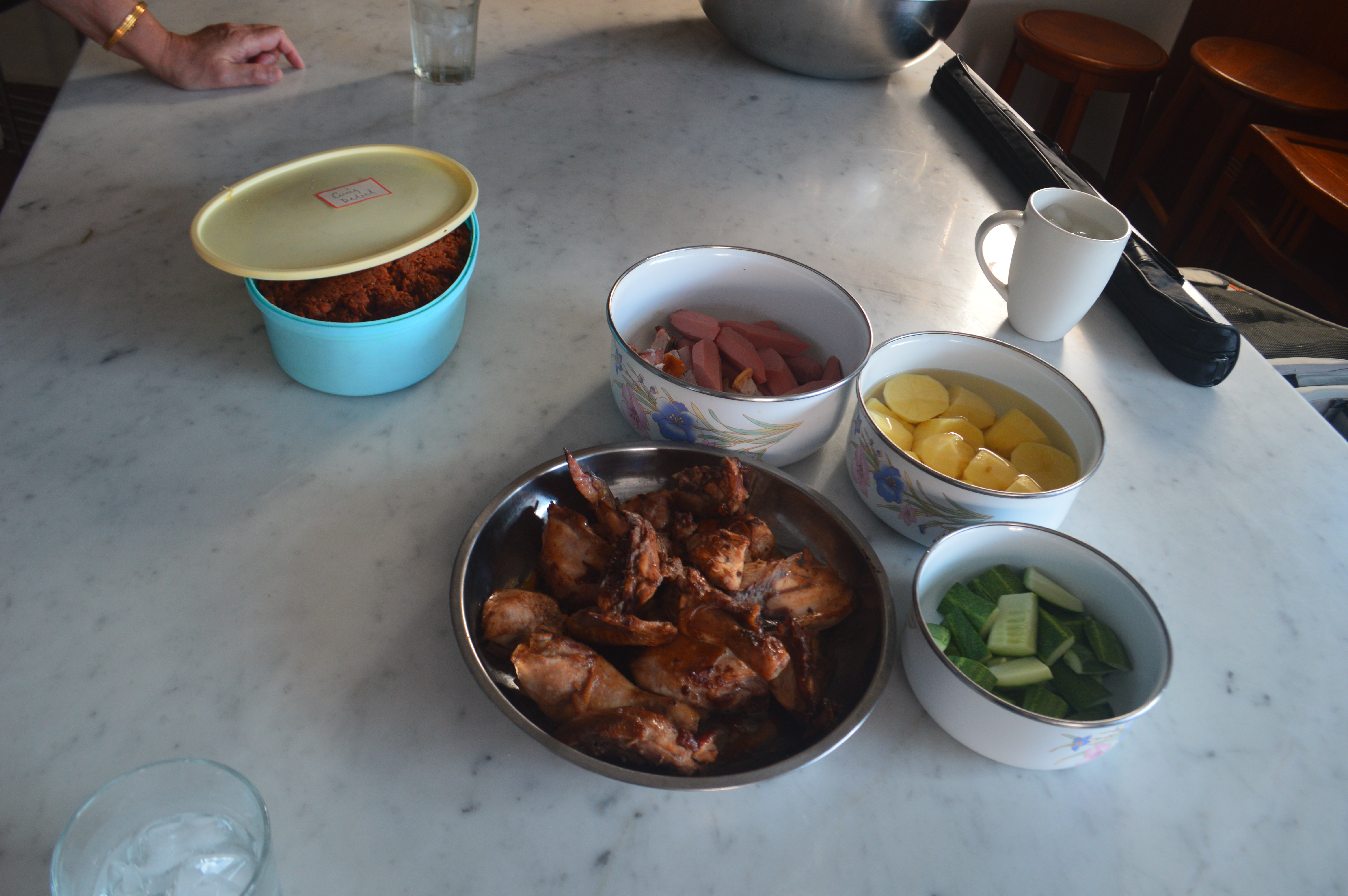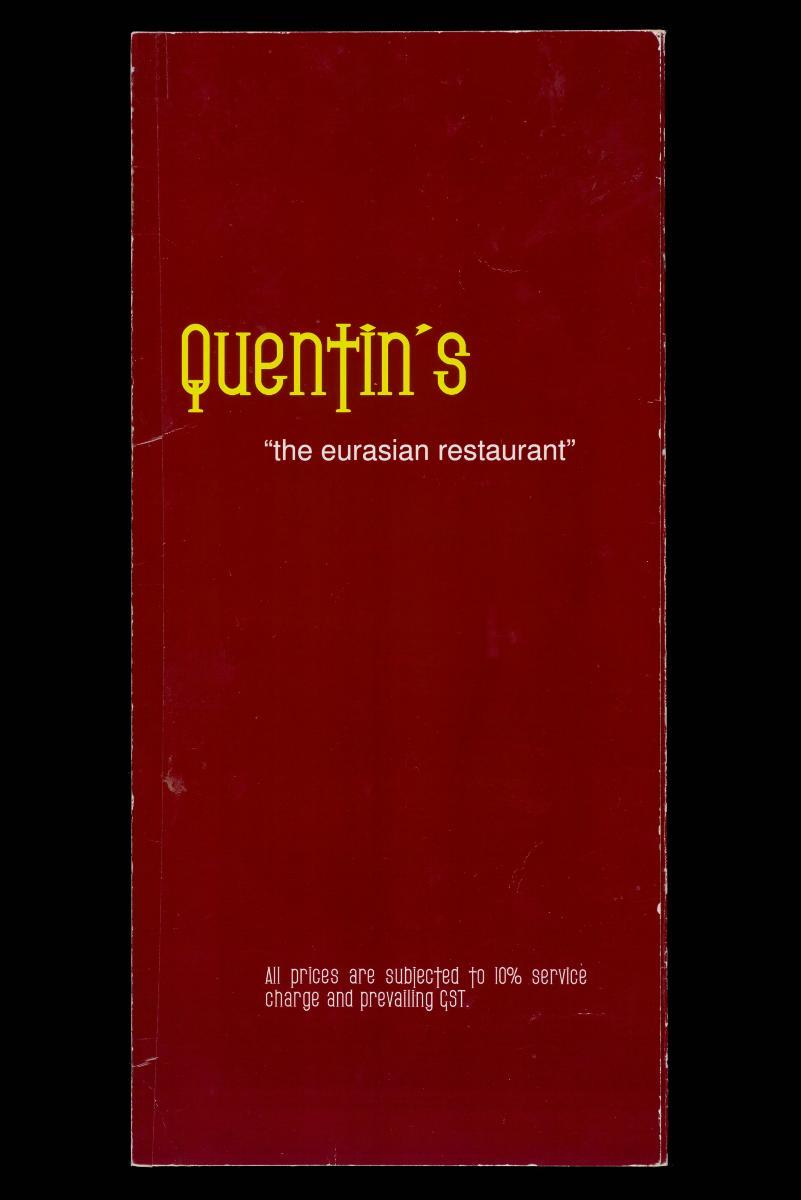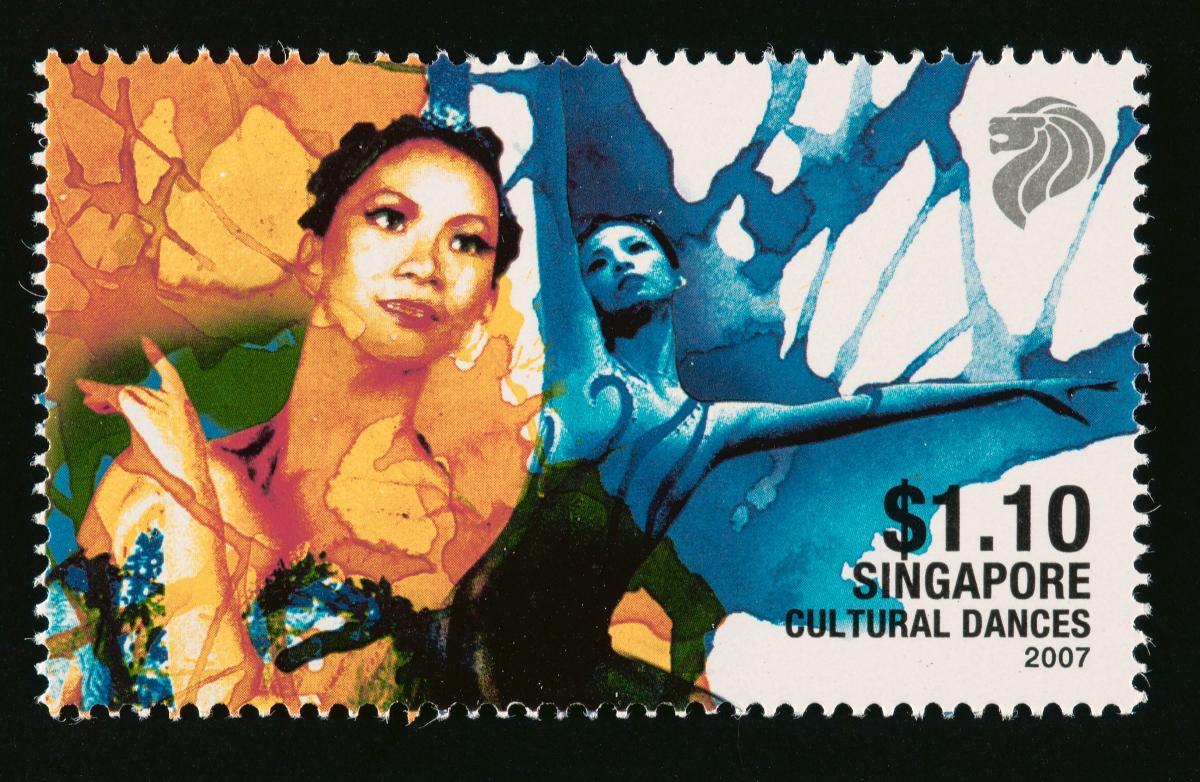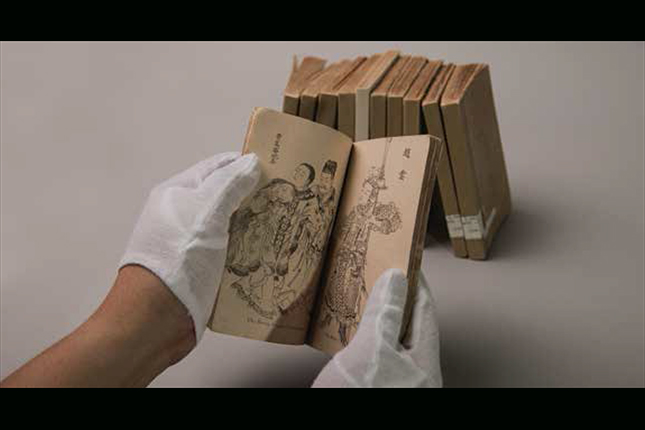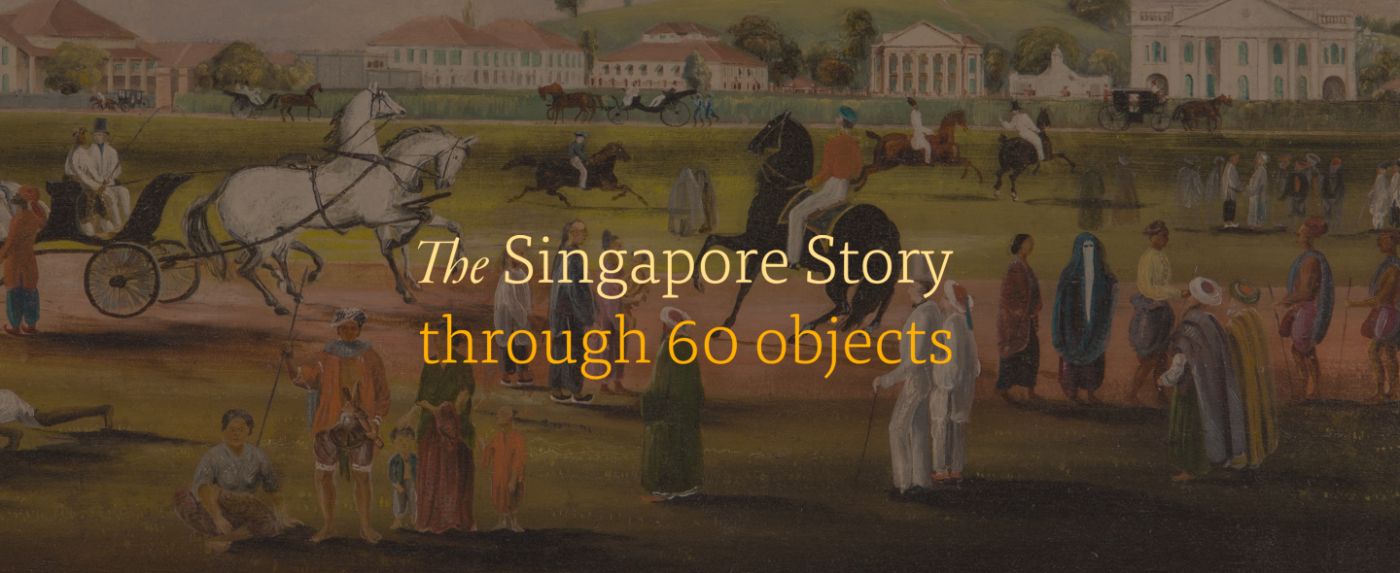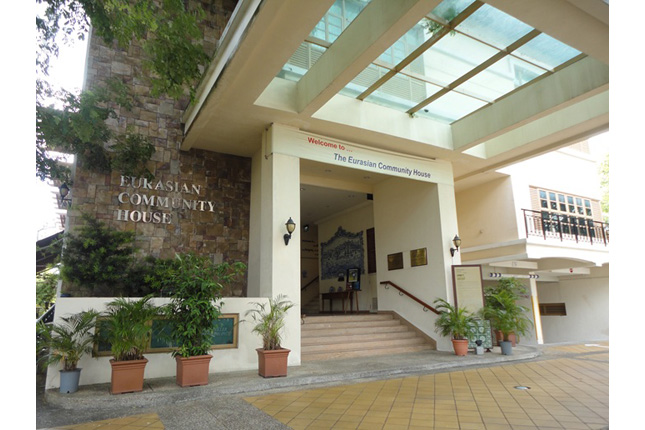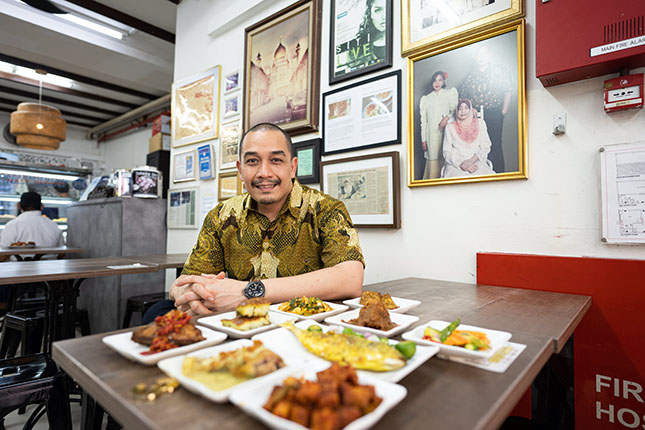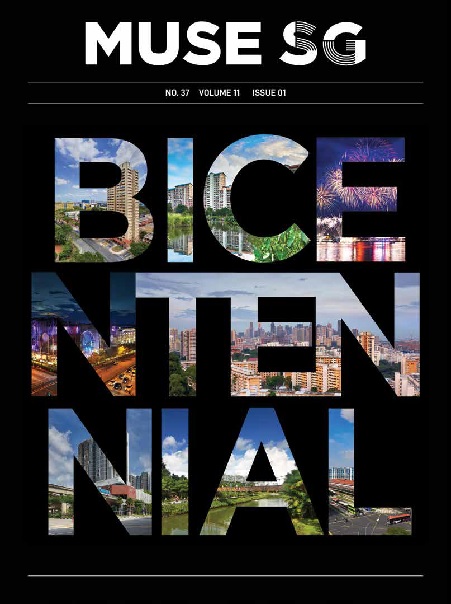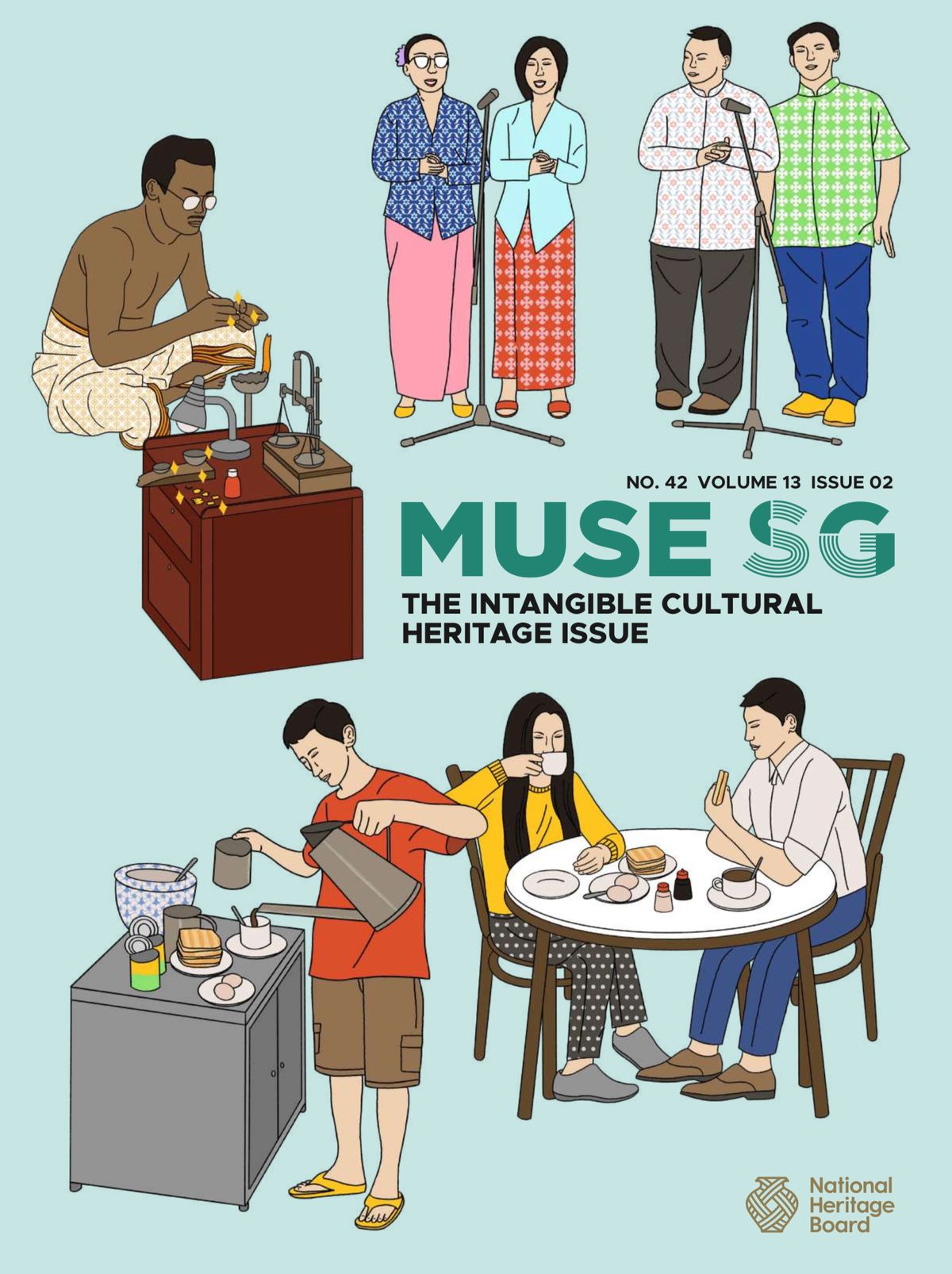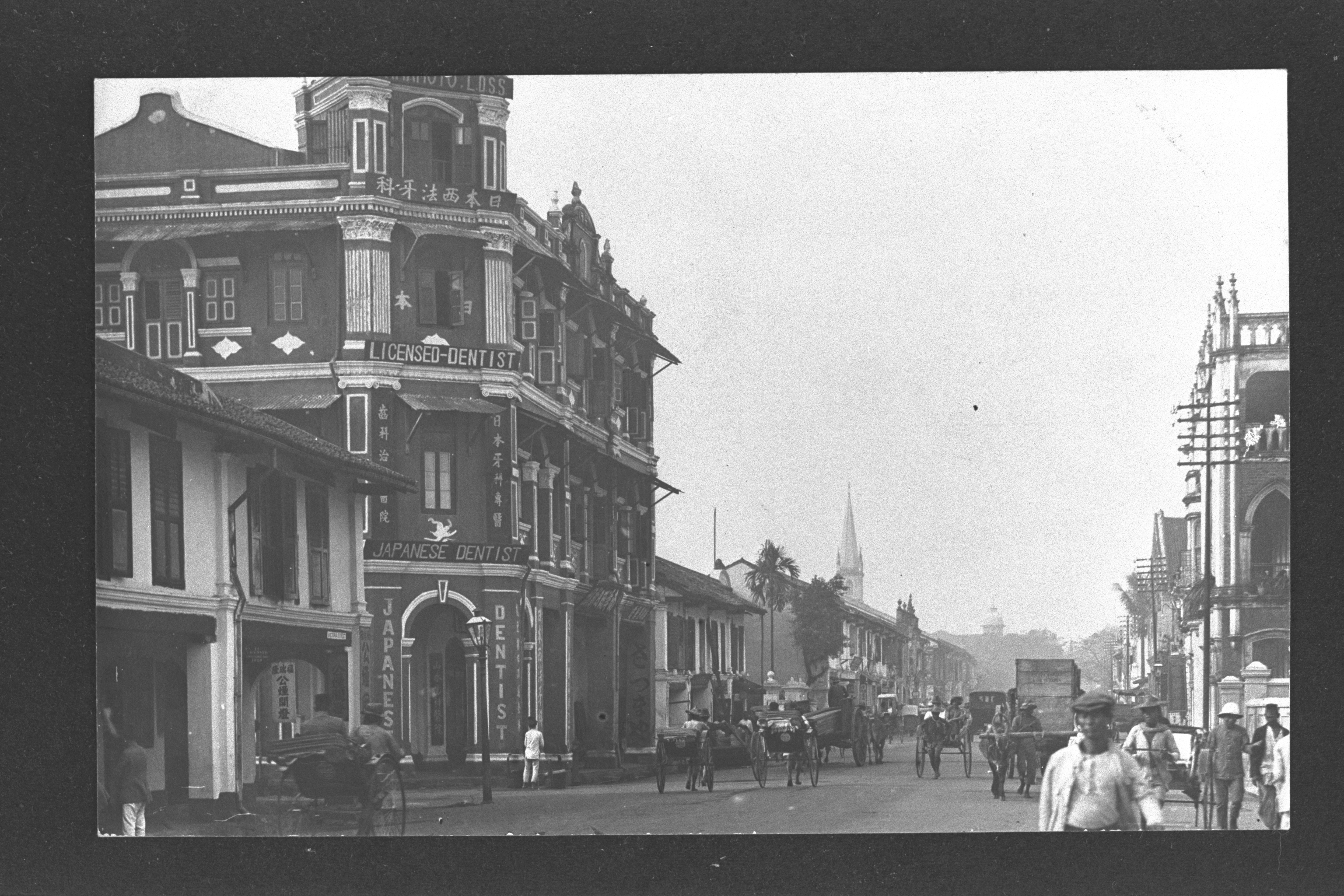Eurasian Cuisine in Singapore
Eurasian cuisine in Singapore features a myriad of European and Asian influences, and is characterised by strong and rich flavours, with Portuguese and Malay influences featuring most strongly due to the ancestral heritage of the local Eurasian community. Examples of well-loved Eurasian cuisine include flavourful, spicy dishes such as feng (a stew made with pig’s innards), curry debal (also known as Devil’s curry) that packs a punch, to sweet, and creamy desserts such as kueh kochi (snack made with glutinous rice flour, coconut fillings and palm sugar).
Typical dishes include soups, stews and curries. Dishes are liberally spiced, and soy sauce and white vinegars are heavily use during braising. Stew can be thickened with crushed soda biscuits – the same ingredient used for the coating of the British deep-fried pork chop cutlet, a reflection of British influences. Peranakan and Malay influences are seen in the use of condiments such as belacan (a dried fermented shrimp paste), chilies, and coconut. Rempah (a herb and spice paste) is a key ingredient in curries and as a thickening agent. In addition, Eurasian and Peranakan culture share common dishes such as achar (pickled assorted vegetables) and babi assam (a pork-based dish). Other examples of Eurasian dishes are mulligatawny (chicken broth with Indian spices), beef smore (a local take on the Western-style beef stew).
Pastries and desserts also feature prominently, reflective of the habits of the earlier Eurasians, where bread form part of their staple diets. For example, pang susee (a bun made of potato or sweet potato and stuffed with meat) is eaten during Lent, while sugee cake, made from semolina, butter and ground almonds, is a popular snack served during festive occasions.
Geographic Location
Eurasian cuisine can also be found in other countries in the region, including Malaysia and Indonesia.
In Singapore, Eurasian cuisine is prepared and consumed in households. There are also several Eurasian food establishments in Singapore, most of which are family-owned and run. Two well-established restaurants are Quentin’s by Mr Quentin Pereira and Folklore by Mr Damien D’Silva. There are also casual eateries like Mary’s Kafe, and Popo and Nana’s Delights.
Communities Involved
The Eurasian community in Singapore practise and transmit the knowledge of preparing Eurasian dishes in Singapore.
While there are some basic guidelines in cooking certain dishes, each family ultimately has their own take on it. The recipes for Eurasian cuisine are typically passed down orally within the family and closely guarded.
Associated Social and Culture Practices
Eurasian dishes are associated with celebratory occasions, and holidays related to Christianity, such as Christmas and Easter. The dishes are typically eaten with rice, served for family, where a scrumptious feast is laid out during family gatherings. A good balance of flavours are ensured, with the planning of every meal.
During Christmas, pie with fillings from a meat stew, and feng (a stew made with pig’s innards) would be served. Notably, the famous curry debal is traditionally a Boxing Day dish. Every Eurasian family would have their own version of the dish. Debal means leftovers in Creole-Portuguese as the dish would be prepared with leftovers. Its main ingredients include babi panggang (roast pork belly) and rempah (herb and spice paste made from candlenuts, tamarind, mustard seeds, onions, vinegar, fresh and dried chilies). Curry debal is also commonly referred to as “Devil’s Curry” because of the spiciness of the dish. During Easter, sweet, creamy desserts like kueh kochi would be made, and would be served whenever there are guests.
In Singapore, local substitutes, such as tapioca as a binding agent, and the use of coconut and gula melaka in dessert, reflect how the local community has adapted some dishes to suit local taste buds.
Experience of a Practitioner
Madam Mary Gomes’s passion for food began in the kitchen at a young age. She learned how to prepare Eurasian food from her mother and aunties, who in turn, learned it from the female members of the older generations in Malacca. Madam Gomes can still recall how her family celebrated the festive season with their traditional dishes. “When we came back from midnight mass, we would sit down as a family and have supper,” she reminisces.
Today, not only does Madam Gomes own a cafe, but she has also published a cookbook, The Eurasian Cookbook, in 2013. Despite her busy schedule, Madam Gomes makes it a point to gather with family members across three generations and eat together every Sunday. Madam Gomes is the main cook, aided by her eldest sister. The younger family members are also roped in to help, equipping them with the knowledge of preparing Eurasian cuisine.
Present Status
Madam Gomes notes how the safeguarding of the Eurasian cuisine in Singapore is linked to the Eurasian identity. Most of the Eurasian cuisine restaurant have ties to the Eurasian Association (EA), which seeks to preserve the Eurasian heritage and raise awareness about the culture and contributions of the community to the wider public. There is also a Eurasian Heritage Centre which sheds light on the culture and practices of the Eurasians in Singapore.
Efforts have been made to document Eurasian recipes via cookbooks while the social media has served as an effective platform for sharing information and reaching a larger number of people.
There are few challenges or obstacles that will prevent the continuing practice of cooking Eurasian cuisine. This is because diners relish the taste of Eurasian food, and these dishes continue to be made frequently in Eurasian households during gatherings.
References
Reference No.: ICH-049
Date of Inclusion: April 2018; Updated March 2019
References
Blaga-Blake, M., Eber-Oehlers, A and Pereira, A. Singapore Eurasians: Memories and Hope. Singapore: World Scientific, 2016.
Gomes, Mary. Food for Family & Friends. Singapore: Marshall Cavendish, 2016.
Pereira, Quentin. Eurasian heritage cooking. Singapore: Marshall Cavendish, 2012.
Pereira, Robin. Robin’s Eurasian Recipes. Singapore: Epigram Books, 2009.




